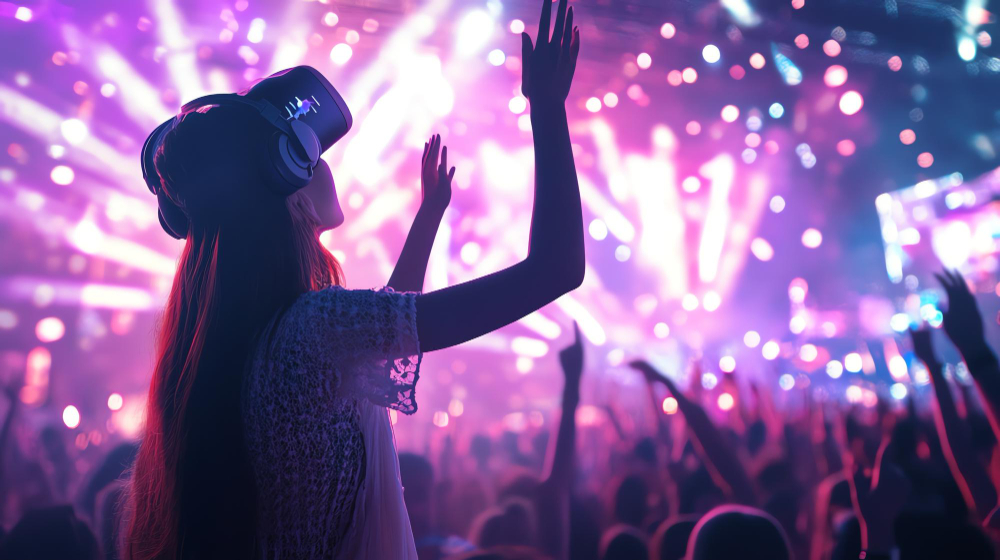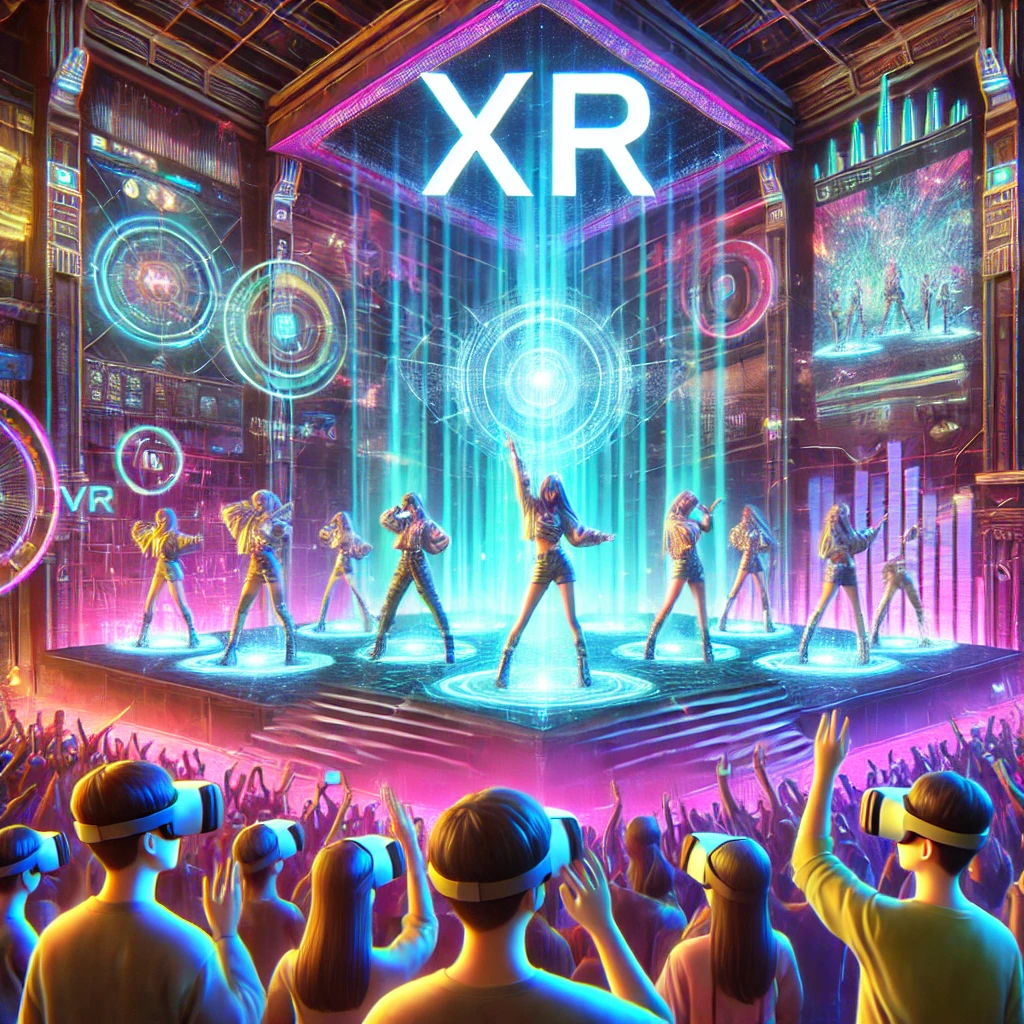The entertainment industry has witnessed an evolution unlike any before with the rise of XR (Extended Reality) technology. XR, an umbrella term for technologies encompassing Virtual Reality (VR), Augmented Reality (AR), and Mixed Reality (MR), is transforming live events and performances, creating experiences that engage audiences in unprecedented ways. This article explores the concept of XR live performances, their impact on entertainment, technological components, benefits, challenges, and their future potential.
What are XR Live Performances?
XR live performances leverage immersive technologies to deliver experiences that blend the real and virtual worlds. Unlike traditional performances that audiences view passively, XR live shows enable viewers to be active participants in a digitally enriched environment. These performances can take many forms, including concerts, theater productions, and interactive storytelling events, creating a unique intersection between digital content and live interaction.
- VR-based Live Performances: Using VR headsets, audiences are transported into entirely virtual spaces where they can attend concerts, watch theater productions, or engage with performers as if they were physically present. This type of performance is fully immersive, allowing attendees to look around, interact, and experience events from different angles.
- AR Live Events: With AR, digital elements are overlaid onto the physical world. Audiences can watch performers interact with digital props, characters, or settings that appear through AR glasses or smartphones. These experiences blend reality and virtual content seamlessly.
- MR Experiences: MR takes the immersion a step further by allowing digital and physical objects to interact in real-time. Performers can manipulate digital items as though they are real, enhancing the overall engagement for audiences.

Technological Components of XR Live Performances
XR live performances rely on a suite of advanced technologies to create interactive and immersive experiences:
- High-Performance Graphics Engines: Software such as Unity and Unreal Engine are used to create rich, real-time 3D environments that can be rendered and interacted with during live performances. These engines support the development of detailed visuals and interactive elements that are essential for an engaging XR experience.
- Motion Capture and Sensors: To translate the movements of performers into the digital space, XR live performances use motion capture technology. Performers often wear suits embedded with sensors that track their movements and project them onto digital avatars or elements.
- Projection Mapping: This technology allows the creation of AR and MR effects in live venues by projecting images onto physical surfaces. The result is a dynamic performance where real and virtual elements merge seamlessly.
- Spatial Audio: Sound plays an integral role in creating immersive experiences. Spatial audio technology is used to create a 3D sound environment, so that sound seems to emanate from specific directions, matching the visual elements of the performance and enhancing the sense of realism.
- Haptic Feedback and Wearable Tech: For deeper audience engagement, wearable technology that provides haptic feedback can be integrated. This allows users to feel vibrations and physical sensations, further bridging the gap between the digital and real worlds.
Examples of XR Live Performances
- Virtual Concerts: XR concerts have gained massive popularity in recent years. Artists such as Travis Scott and Ariana Grande have performed in virtual environments within video games like Fortnite, drawing millions of viewers who participated from around the world. These performances feature stunning visual effects that transcend what is possible in physical concerts.
- Interactive Theater: Productions like The Under Presents on VR platforms have explored interactive storytelling, where audiences can join a live show that evolves based on real-time participation. This type of performance gives attendees a sense of agency, making the experience unique for each participant.
- AR-enhanced Live Shows: AR technology has been used in live performances where audiences equipped with AR glasses or smartphones can view digital overlays. For example, stage productions might have digital characters or effects that only those with AR capability can see, enhancing the performance’s appeal.
Benefits of XR Live Performances
- Immersive Engagement: XR live performances elevate the level of audience involvement by placing them in the center of the action. Whether it’s interacting with digital elements or navigating a VR environment, attendees are not just spectators but participants.
- Global Accessibility: XR technology allows people from all over the world to attend live performances without physical or geographical constraints. This opens up new revenue streams for artists and event organizers while democratizing access to culture and entertainment.
- Innovative Storytelling: XR provides performers and artists with the creative freedom to develop stories and performances that are not bound by physical limitations. From fantastical landscapes to interactive digital characters, XR pushes the boundaries of what live performances can achieve.
- Safety and Adaptability: XR live performances gained significant traction during the COVID-19 pandemic as a safe alternative to traditional concerts and theater shows. Even in the face of potential future disruptions, XR provides a resilient platform for artists to reach audiences without physical gatherings.
- Personalized Experiences: With interactive elements, performances can be tailored to individual preferences. Audiences can choose their perspectives, interact with performers, or select different paths within a show, making each experience unique.
Challenges and Limitations
Despite its advantages, XR live performances face several challenges:
- High Costs and Technical Barriers: Producing high-quality XR performances requires significant investment in technology, equipment, and expertise. This can be a barrier for smaller production companies and independent artists.
- Learning Curve: Both performers and audiences may need to adapt to the new format of XR performances. Training is often required to familiarize performers with motion capture, digital interaction, and XR-specific choreography.
- Limited Access to Technology: For audiences, participating in VR or AR performances requires access to specific technology such as VR headsets or AR-enabled devices. This limits the reach to those who can afford or access such equipment.
- Physical Discomfort: Extended use of VR headsets can lead to motion sickness and discomfort for some users, potentially hindering their enjoyment of live performances.
- Technical Glitches: XR performances rely heavily on technology, making them susceptible to glitches or technical failures that can disrupt the experience. Ensuring robust infrastructure and support is essential to mitigate these risks.
The Future of XR Live Performances
As technology continues to advance, the potential for XR live performances is immense. Future developments could include:
- Improved Hardware: Lighter, more comfortable VR headsets and AR glasses will make XR experiences more accessible and enjoyable for audiences.
- AI Integration: The use of artificial intelligence could lead to performances that adapt in real-time to audience feedback, creating a more interactive and personalized experience.
- Collaborative Global Performances: XR technology could enable artists from different parts of the world to collaborate virtually, creating performances that are more diverse and rich in cultural influences.
- Holographic Projections: With advances in holographic technology, future XR performances could include fully 3D holograms viewable without special glasses, making AR experiences more inclusive and visually impactful.
Conclusion
XR live performances represent a significant shift in how audiences engage with entertainment. By blending the physical and digital realms, XR not only redefines the boundaries of live shows but also opens up new opportunities for global engagement, interactive storytelling, and creative expression. As technological barriers continue to lower and the entertainment industry embraces innovation, XR live performances are poised to become a staple of modern entertainment, offering unforgettable experiences that connect audiences and performers in novel and meaningful ways.
# What is Ice Staging Asia’s Spatial Web service? Istaging service is a cloud software service that allows you to create the service you want by using VR / META / AR / AI / DATA at once. It is in the form of SaaS, and customers can edit and use it themselves by subscribing to an account, and it also provides a customization service. It is a highly stable service already used by 100,000 global corporate customers, including retail companies (Louis Vuitton / Dior), real estate companies (REMAX / AECOM), exhibitions (CES / TOYOTA exhibition hall), and industries (SAMSUNG / Mercedes-Benz). # Visit the Ice Staging Asia homepage (https://istagingasia.co.kr) to check more information related to VR / META / AR / AI. # Solution / Technology Inquiry: https://istagingasia.com/contact/
# Detailed solution price: https://istagingasia.com/pricing
# Want to see project-specific cases?
*Retail – https://istagingasia.com/project/retail/
*Real Estate – https://istagingasia.com/project/real-estate/
*Industry – https://istagingasia.com/project/industry/
*Education – https://istagingasia.com/project/education/
*Exhibition – https://istagingasia.com/project/exhibition/
*Museum & Gallery – https://istagingasia.com/project/museum-gallery/
*Expo – https://istagingasia.com/project/expo/
*Tour – https://istagingasia.com/project/tour/
